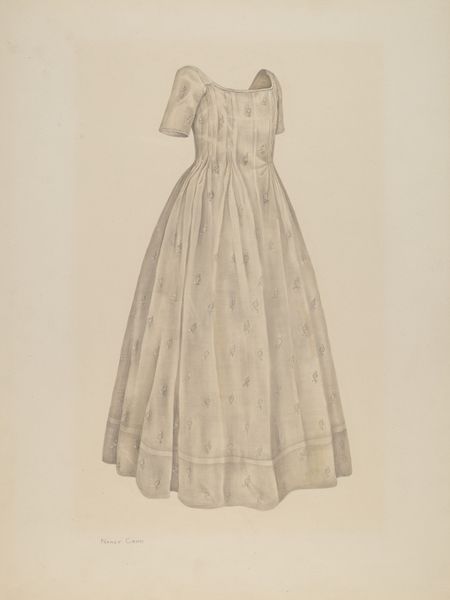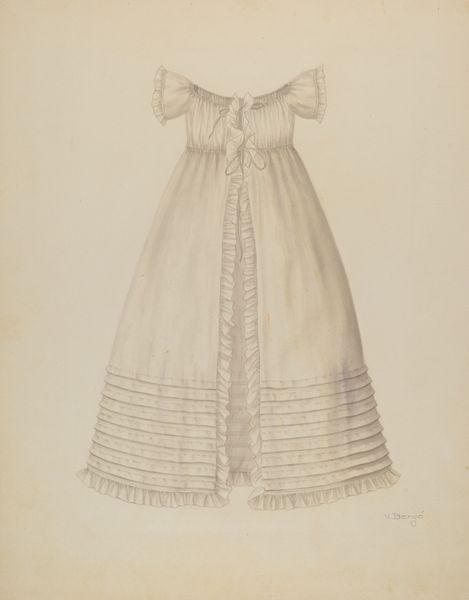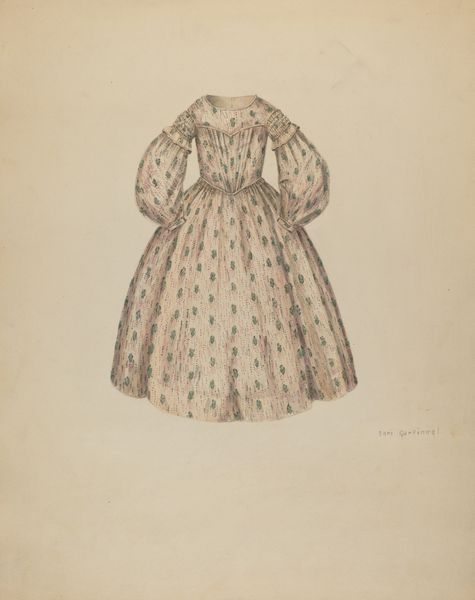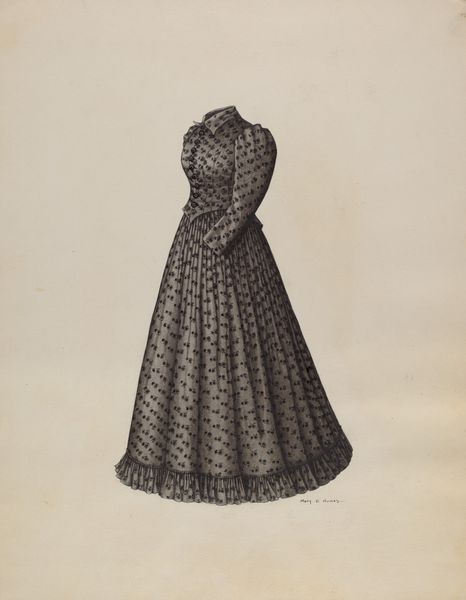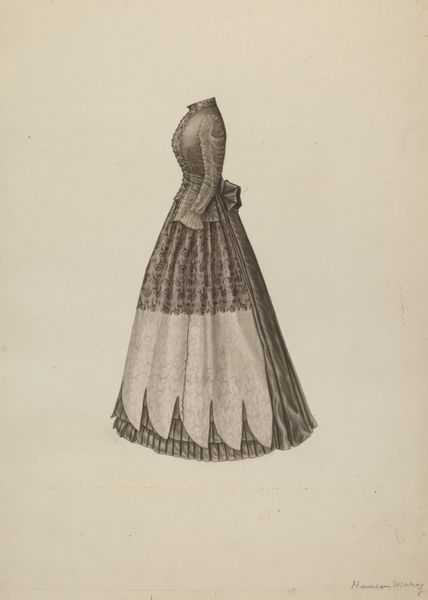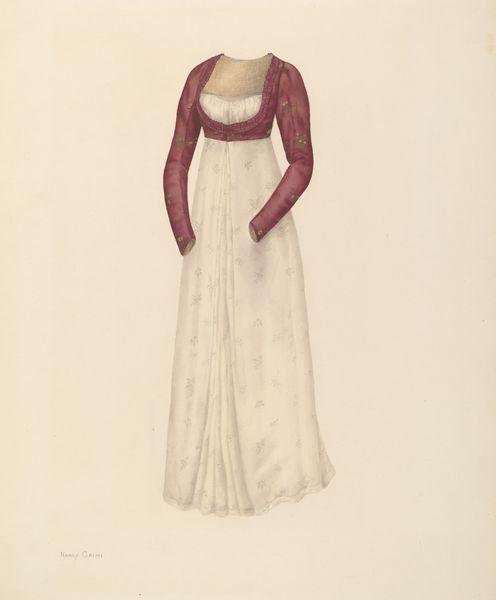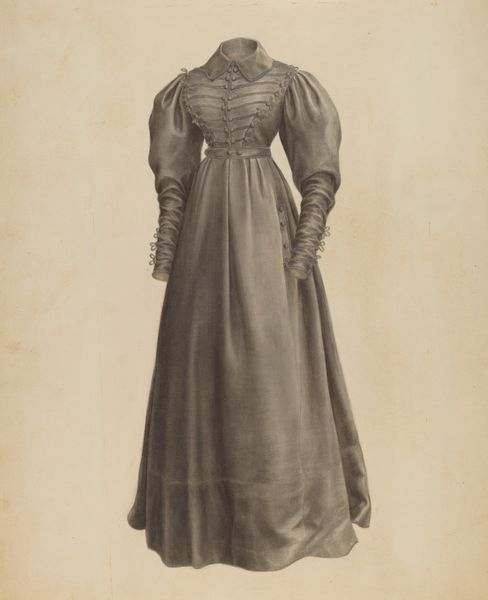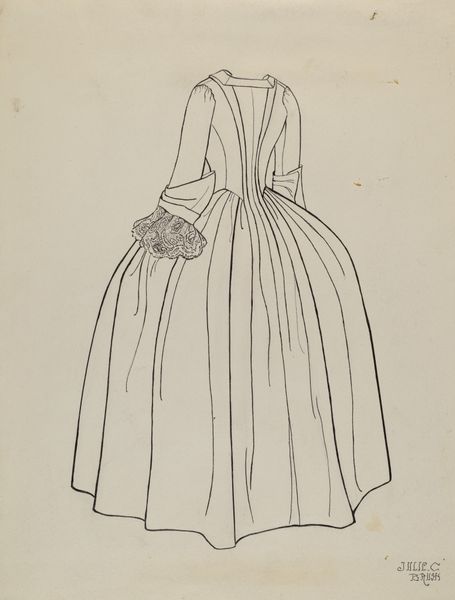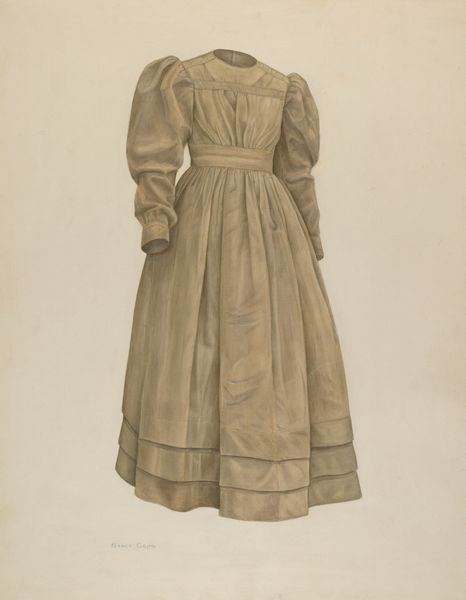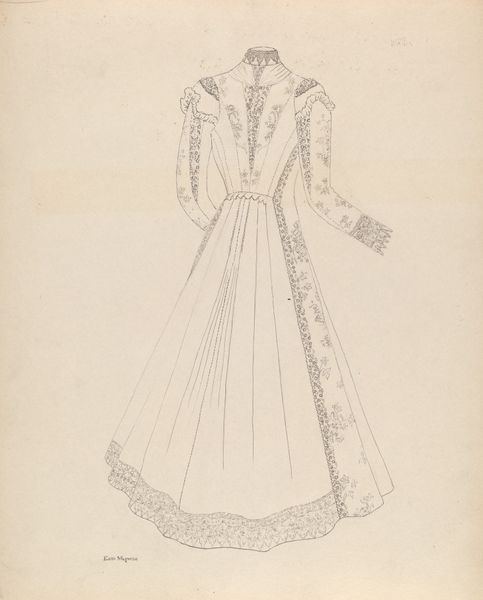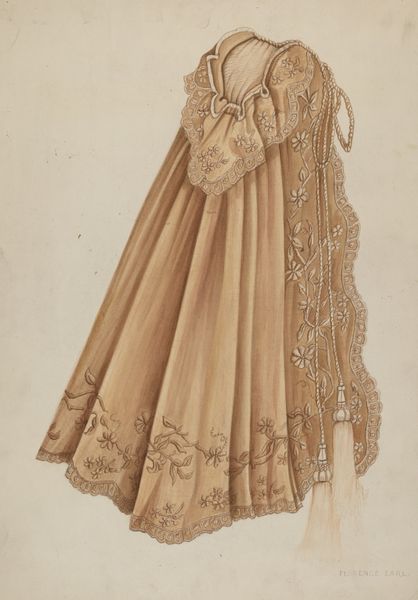
drawing, paper, pencil
#
portrait
#
drawing
#
paper
#
pencil drawing
#
pencil
#
academic-art
Dimensions: overall: 45.6 x 37.9 cm (17 15/16 x 14 15/16 in.) Original IAD Object: 46" long; 100" circumfrence of skirt
Copyright: National Gallery of Art: CC0 1.0
Curator: This is Mina Greene's pencil drawing, simply titled "Coat," from around 1937. Editor: There’s a stark stillness to it, almost like a ghost in a room. It has a certain subdued quality—the shading, the pale tones… It’s like witnessing absence. Curator: The composition certainly emphasizes that. Greene employs a rigorous academic style. Note the exacting detail of the pencil work, particularly in rendering the coat’s embellishments. Consider how the pattern leads the eye down the garment. The very controlled, almost diagrammatic representation is devoid of sentiment, favoring objective visual information. Editor: But there's emotion embedded in the choice to depict this specific coat, no? I wonder about its material reality: What sort of fabric was it? Who made it? These details suggest labour, the textures suggesting time. The slight sheen suggested in the pencil marks hints at perhaps silk or wool – materials historically tied to trade, status, even exploitation. The decoration is particularly intriguing—what social ritual might have demanded such elaborate work? Curator: Those questions are valid, of course. However, focusing strictly on its intrinsic form, Greene achieves a certain universality through precise rendering. The emptiness it conveys can speak to broader concepts of memory and even loss beyond any specific narrative context of garment production and wearing. We cannot forget the clean formal elements! Editor: Clean they are! Yet the drape and implied weight of the fabric speak volumes. Someone must have skillfully crafted the original coat for its drape to be rendered. It prompts one to think about the unnamed labour that makes fine tailoring possible, particularly around the 1930s when this piece was made, and all the hidden social conditions implied. Curator: So, it seems for you, it's an inquiry into socio-economic fabrics, not only fabric itself? Editor: Indeed. We seem to always meet between the real and represented material. I love the ghostly representation. Curator: And I admire her technical skill in the way this ephemeral drawing delivers presence with precise form. A delicate touch, undeniably powerful in its way.
Comments
No comments
Be the first to comment and join the conversation on the ultimate creative platform.

